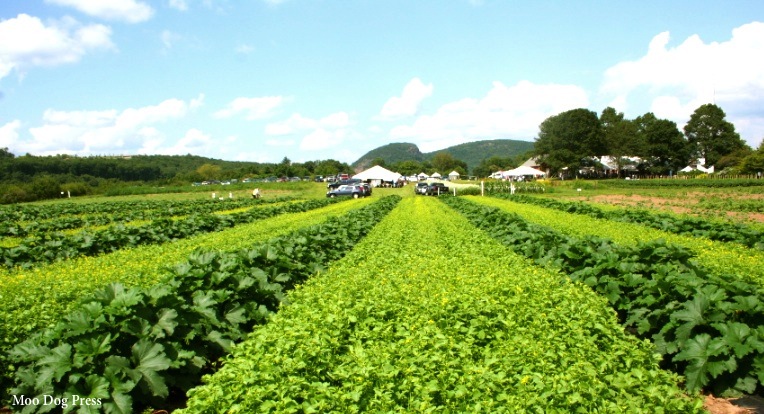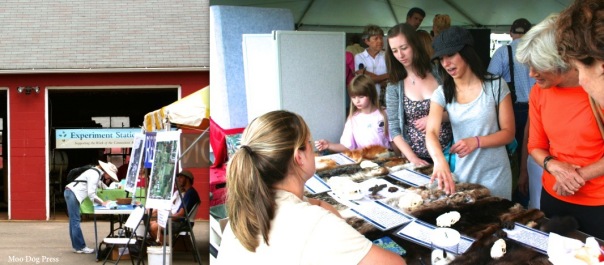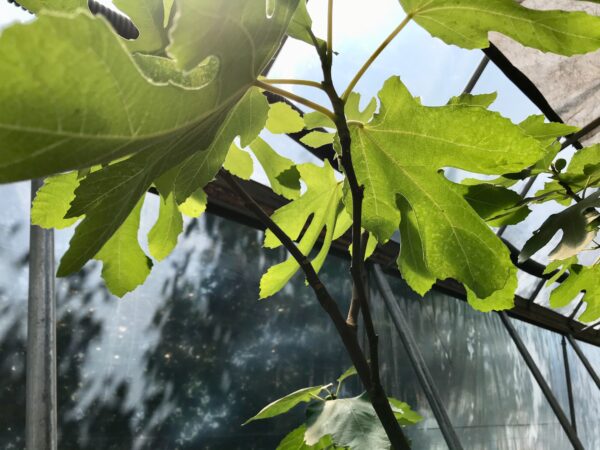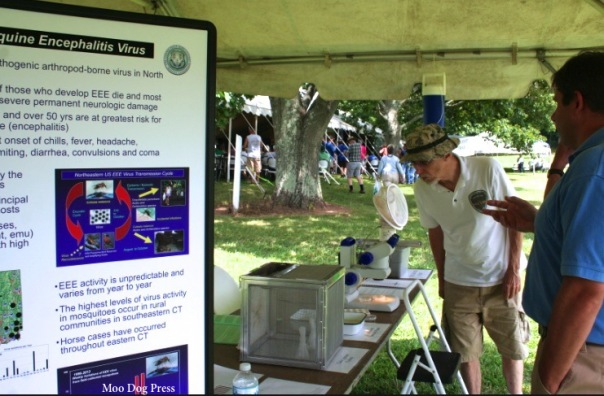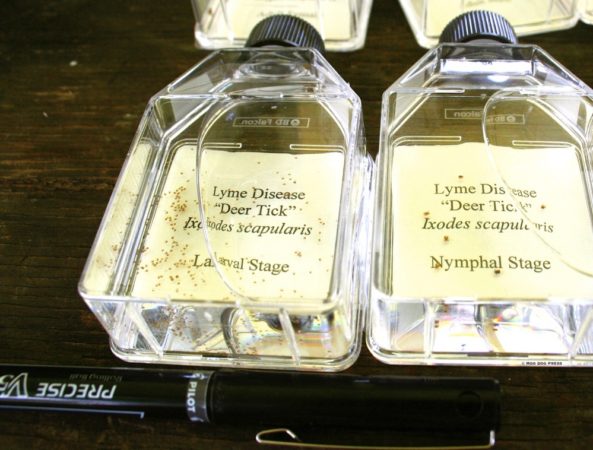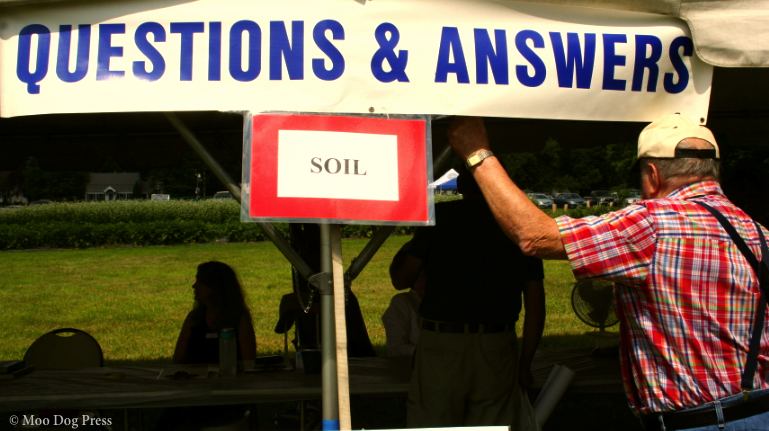CAES Plant Science: Questions Welcome. Scenic Views, Walk Gardens
Editor's note: There's a place where questions are encouraged, world-class scientists can be met face to face, and you'll walk much, learn more. The Connecticut Agricultural Experiment Station (CAES) Plant Science Day on the 75-acre Lockwood Farm in Hamden is the first Wednesday in August each year. This year is is Wednesday, Aug. 4.
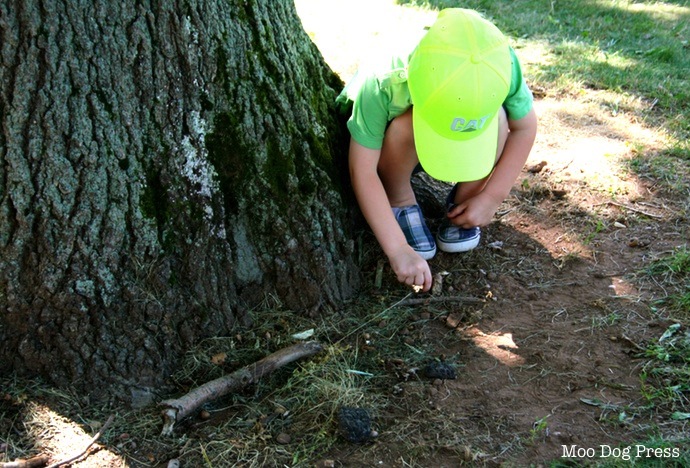
The story that follows (updated) is a sampling of what the annual CAES Plant Science Day offers; each year is different. Bring a mask and respect others who keep their distance. Enjoy the day.
Stand on earth, inhale the air, remember that your human form is (more or less) is composed of 50 to 75 percent water. Everything re-used and endlessly recycled, moving from one form to another. Water. Earth. Life.
“To put science to work for society, The Connecticut Agricultural General Assembly chartered The Station to investigate plants and their pests, insects, soil, and water. Inspired by Samuel W. Johnson, professor of agricultural chemistry at Yale University, and established in 1875, The Connecticut Agricultural Experiment Station is the first in America and remains a separate state agency. Initially located at Wesleyan University and later at Yale, The Station moved to its current site in 1882.”
The Wisconsin Glacier sculpted the land of that is this farm more than 10,000 years ago and left behind a huge glacial erratic known as “The Rock” plus “moderately well-drained Watchaug loam and shallow-to-bedrock Sunderland fine sandy loam” to serve as an outdoor laboratory. Experiment station scientists learn “how to manage plant pathogens and insect pests of agricultural crops and trees. Scientists also evaluate new crops for Connecticut, test fruits and vegetables, and evaluate crops for biofuel.”
In the Connecticut River Valley, fertile loamy good soil underfoot may be taken for granted, but having lived elsewhere in the United States, will attest to the fact that not all soils are created equal.
By the way, the USDA Natural Resources Conservation Service (NRCS) is America's agency for soil conservation, classification and studies and was born amid the wake-up call that was the Dust Bowl era of the 1930s – caused by a combination of over-cultivation farming methods, drought, and record-breaking temperatures. Much has been learned since them, but we all have a ways to go to work with not against Mother Nature.
From learning about invasive insects to see beautiful displays of social insects plus working honeybee hives – the expansive acres of the farm allowed for interaction with vendors about local products, courses, hikes, groups, clubs, associations – programs for schools and a wealth of sources. Lockwood Farm has a bird and butterfly garden that is accessible to all and is a popular spot for visitors. The garden pathways provides a serene retreat to walk or find a bench to watch bees and butterflies do their work – it also may inspire ideas to take root in a garden of your own.
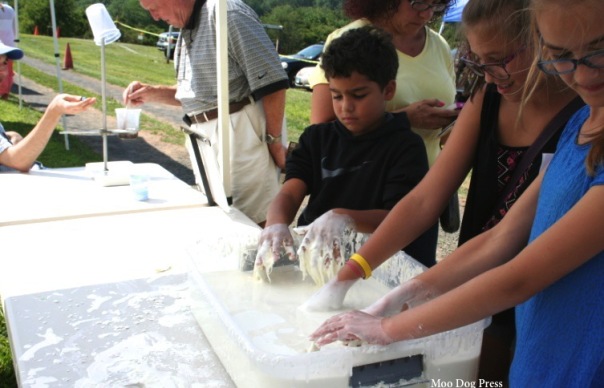 Ice cream was scooped up in a past event and served free (donations only were accepted). Boy, was it a treat.
Ice cream was scooped up in a past event and served free (donations only were accepted). Boy, was it a treat.
Nearly every age from newborn to well-seasoned may be seen interacting with scientists and staff – an amazing opportunity for access. Hands-on science one year was mixed up with plenty of fun – resulting in goopy glop.
The scientific studies are life in progress – grape cultivars, a grove of chestnuts, fig trees in pots. While it may not be possible to absorb a percent of all that is on display and growing, a visit is sure to provide a glimpse of what goes on here year round. Research is a constant.
Good people to know.
Wikipedia: “The Connecticut Agricultural Experiment Station (CAES) is the Connecticut state government's agricultural experiment station, a state government component that engages in scientific research and public outreach in agriculture and related fields. It is the oldest state experiment station in the United States, having been founded in 1875. Its official mission is to “develop, advance, and disseminate scientific knowledge, improve agricultural productivity and environmental quality, protect plants, and enhance human health and well-being through research for the benefit of Connecticut residents and the nation.” The station operates a main research campus in New Haven, a research farm in Hamden, a satellite research facility and farm in Windsor, and a research farm in Griswold.”
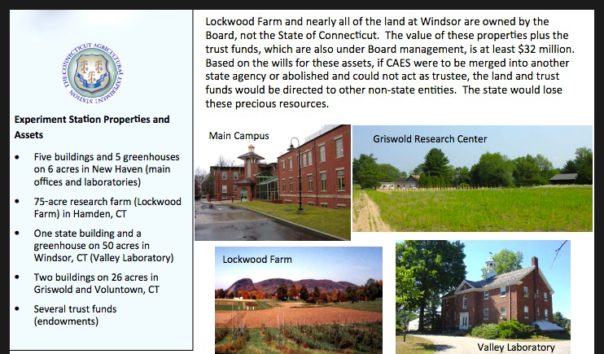
Knowledge gleaned is across the USA and the world. Image linked to report about the scope of the research work, findings, budget, land holdings as a PDF.
Note: The Connecticut Ag Experiment Station Associates founded in 1990 supports the work of the CAES and make its research programs and many services better known. The associates assist at station events. New members are always welcome. ESA Website www.agstationfriends.org; Facebook at www.facebook.com/ExperimentStationAssociates. Remembering the late Louis A. Magnarelli, who was a great man to have met for an interview. Link to a memorial fund: “This fund commemorates the life and work of Dr. Magnarelli. Throughout his career at The Connecticut Agricultural Experiment Station, Dr. Magnarelli maintained his unwavering commitment to the station’s motto ‘Putting science to work for society.'”

